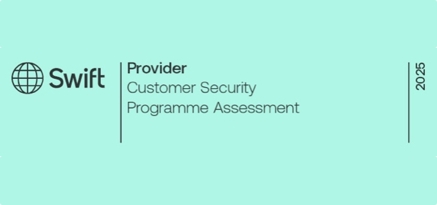
News & Insights > Blog >
The financial industry is increasingly interconnected, relying on digital transactions and communications facilitated by the Society for Worldwide Interbank Financial Telecommunication (Swift). While this connectivity undoubtedly enhances operational efficiency, it also presents a significant cybersecurity challenge.
The global financial ecosystem is a constant, prime target for cybercriminals and state-sponsored threat actors, making robust security measures essential. The Swift Customer Security Programme (CSP) was introduced to safeguard financial institutions by establishing stringent security controls designed to mitigate risks associated with cyber threats, and facilitating secure and standardised messaging services for global financial institutions.
The financial sector faces a diverse range of cyber threats, from ransomware and data breaches to sophisticated attacks exploiting vulnerabilities in network infrastructure.
Attackers, whether independent criminal groups or nation-state actors, seek financial gain or aim to destabilise institutions. High-profile incidents such as the attacks on Bangladesh Central Bank and a commercial bank in Vietnam illustrate the severe impact of such breaches. In these cases, the threat actor group known as Lazarus infiltrated Swift’s network, issued unauthorised transaction messages, and attempted to steal nearly $1 billion, demonstrating the potential financial and reputational damage institutions can suffer. Given the evolving nature of cyber threats, Swift recognised the urgency of implementing standardised security measures and introduced the CSP in 2017.
The CSP is designed to help Swift customers secure their operations against cyber threats by enforcing a set of mandatory security controls. Originally comprising 16 mandatory and 11 advisory controls, the programme has since evolved, with the 2024 version including 22 mandatory and 8 advisory controls.
These controls address critical security areas such as user access management, malware prevention, and incident response. Compliance with CSP is not just about protecting an individual institution; it fosters trust across the financial ecosystem by ensuring all entities adhere to a baseline level of security. Swift customers bear the responsibility for securing their own environments, but CSP provides a framework to guide and enforce security measures. Each year, Swift updates the Customer Security Controls Framework (CSCF) in July, with financial institutions required to attest to compliance by 31 December through an independent assessment.
Achieving compliance with the CSP requires a strategic and proactive approach to cybersecurity. Financial institutions must implement the mandatory controls relevant to their Swift architecture while fostering a security-first culture.
This involves continuous risk assessment, vulnerability management and incident response planning to address potential threats effectively. The implementation of a strength-in-depth approach ensures financial sector organisations not only meet compliance requirements but also establish resilience against emerging cyber risks.
Independent assessments, such as those conducted by AMR CyberSecurity, provide assurance that institutions are aligning with Swift’s rigorous security standards.
At the core of CSP is the Swift Customer Security Controls Framework (CSCF), which sets out specific security measures financial institutions must follow. The framework is structured around three primary objectives, seven security principles, and 32 controls, ensuring a comprehensive approach to securing Swift-related transactions.
The Framework applies to organisations based on how they interact with the Swift network, defining reference architectures that determine the applicability of specific security controls. Institutions that rely on third-party providers for transaction processing must ensure those providers also comply with CSCF requirements. Since the financial sector operates in a dynamic threat landscape, Swift continuously refines its framework to address emerging risks, reinforcing the need for ongoing vigilance and adaptation.
Integrating CSP compliance into an organisation’s broader cybersecurity strategy can be complex, but aligning the programme's controls with established frameworks such as the National Institute of Standards and Technology (NIST) Cybersecurity Framework and ISO 27001 can streamline implementation. Mapping CSCF controls to these widely recognised frameworks allows financial institutions to enhance existing security measures while simplifying compliance efforts. This approach not only strengthens cybersecurity resilience but also maximises the return on investment in security initiatives.
For financial institutions, navigating the intricacies of the Swift CSP can be challenging, requiring expert guidance to ensure compliance and optimal security implementation.

AMR CyberSecurity offers tailored consultancy services designed to assist organisations in meeting and exceeding Swift’s security requirements. This includes pre-assessment evaluations to identify security gaps, support in implementing the necessary controls, and ongoing monitoring to maintain compliance. Employee training and awareness are also integral to a successful security strategy, ensuring staff members understand and uphold best practices for cybersecurity.
By partnering with AMR CyberSecurity, financial institutions can navigate the complexities of CSP compliance with confidence. As a trusted cybersecurity consultancy, AMR provides expertise in implementing Swift’s security controls, conducting independent assessments, and developing tailored security strategies. With a team of Swift-certified assessors and extensive experience in financial cybersecurity, AMR is well-positioned to support organisations in fortifying their security posture.